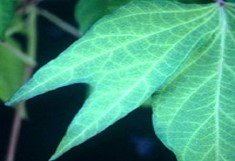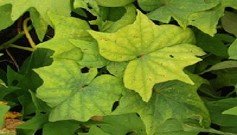Schedule
Sweet Potato Crop Schedule
| Product Name | Fertilizers | ||||||||
|---|---|---|---|---|---|---|---|---|---|
| Poornima Kit | NPK Grow Caps |
Aceto Caps | Humigrow Neno Powder |
Alp | Sonha-Bihan | Amavasya Kit | IBP Kit | ||
| Humic Acid | Chelated Multi-micronutrient |
PGP/PGR | |||||||
| Land Reparation | week -1 | 1 Kit | |||||||
| Sowing | week 0 | ||||||||
| Germination | week 1 | ||||||||
| Vegetative Growth | week 2 | 1 Kit | 1 Cap | ||||||
| week 3 | |||||||||
| week 4 | |||||||||
| week 5 | |||||||||
| week 6 | 1 Cap | 1 Cap | 120gm | ||||||
| week 7 | 250gm | 250gm | |||||||
| week 8 | 1 Kit | ||||||||
| week 9 | |||||||||
| week 10 | 1 Cap | 1 Cap | 120gm | ||||||
| week 11 | |||||||||
| week 12 | |||||||||
| HARVESTING | |||||||||
| Total Quantity | 1 kit | 2 Caps | 3 Caps | 240gm | 250gm | 250gm | 1 Kit | 1 kit | |
| Broadcast | |
| Top Dressing | |
| Basal Dressing | |
| Soil Application | |
| Spray | |
| * | Optional |
NOTE: For the first year donot immidietaly substitute 100% chemical fertilizer with the SIESTO GREEN products, as the soil is used to chemical fertilizer, it may affect the output. So the best way to substitute is by reducing 50% of chemical input in the first year, 25% the following 2nd year, & then another 10% by the 3rd year. After the 3rd year use synthetic fertilizer / inorganic fertilizer if their is a requirement depending on the soil health.
CROP SCHEDULE FOR SWEET POTATO
Sr. No.
Treatment / Application
Product
Dose /Acre
APPLICATION
Management
1
Vegetative – Dissolve in 20 to 200 ltr. of water as required for 1 acre of land and apply through Drip Irrigation or drench.
POORNIMA KIT
1 Kit
Apply after germination in week 2
It is a balanced form of nutrients that includes NPK, Zinc, Cropforce NP, Humigrow NP, and Mycorrhiza NP
2
Vegetative – Mix all with the required amount of water and apply through drip irrigation, flood irrigation, or drenching as per farmer’s availability.
NPK + Humigrow
2 Caps + 120gm
Apply it in week 6 and 10
It is a balanced form of Nutrition that includes NPK.
3
Flowering/ Fruiting – Mix both in 20 – 200 liters of water as per requirement and spray it on the plants.
ALP + Sonhabihan
250gm + 250gm / 200 lit. of water
Apply it in week 7 (when flower buds are seen) and further more if required
It is a Micronutrient and PGP that helps in Growth, Fruit set, and the quality of the produce.
4
Vegetative – Dissolve in 20 to 200 ltr. of water as required for 1 acre of land and apply through Drip Irrigation or drench.
ACETO Caps
1 cap
Apply it in week 6 and 10
It is a GLUCONOACETOBACTER which has the ability to colonize the plant roots and fix atmospheric Nitrogen.
5
Soil Treatment – Dissolve in 20lit. to 200lit. of water as per requirement for 1 acre of land and apply through drip irrigation or drench.
IBP KIT
1 kit
Apply it as soil application before sowing
It prevents soil-borne diseases and nematodes. Apply as per the soil health and soil-borne diseases.
6
Vegetative and Flowering/ Fruiting – Mix all with the required amount of water and apply through foliar spray or drenching as per infestation of insect.
Amavasya kit
1 kit
Apply it in week 8
It is a balanced form of insecticides which includes Traps, Lifeline, Bt, Acarida, and Meta capsules.
NUTRIENTS DEFICIENCY
NUTRIENT
IDENTIFICATION
SYMPTOMS
SUGGESTED PRODUCT
Nitrogen
 General symptoms are a uniform light green chlorosis of the leaves, and slow growth resulting in a delayed or sparse ground cover.
ACETO Caps
Phosphorus
General symptoms are a uniform light green chlorosis of the leaves, and slow growth resulting in a delayed or sparse ground cover.
ACETO Caps
Phosphorus
 Yellowing may spread from discrete interveinal patches, which typically become cleared of anthocyanin pigment, or may be more general, but often affecting one half of the blade more than the other.
PSB Plus
Potash
Yellowing may spread from discrete interveinal patches, which typically become cleared of anthocyanin pigment, or may be more general, but often affecting one half of the blade more than the other.
PSB Plus
Potash
 Brown necrotic lesions develop within the chlorotic zones and eventually spread to cover the entire leaf blade.
Potash Grow
Sulfur
Brown necrotic lesions develop within the chlorotic zones and eventually spread to cover the entire leaf blade.
Potash Grow
Sulfur
 Sulfur deficiency results in a uniform pale green chlorosis throughout the plant. Veins do not retain a green colour, and in many cases, they may be more chlorotic than the interveinal tissue.
ALP
Magnesium
Sulfur deficiency results in a uniform pale green chlorosis throughout the plant. Veins do not retain a green colour, and in many cases, they may be more chlorotic than the interveinal tissue.
ALP
Magnesium
 Interveinal chlorosis of older leaves. The main veins retain a relatively broad margin of dark green tissue, but the minor veins are less well defined, resulting in radial bands of pale tissue between the main veins.
ALP
Iron
Interveinal chlorosis of older leaves. The main veins retain a relatively broad margin of dark green tissue, but the minor veins are less well defined, resulting in radial bands of pale tissue between the main veins.
ALP
Iron
 Yellow interveinal chlorosis develops, which is characterised by a sharply contrasting green network of veins.
ALP
Boron
Yellow interveinal chlorosis develops, which is characterised by a sharply contrasting green network of veins.
ALP
Boron
 Boron deficiency affects actively growing tissue, both of the shoots and roots. The first sign is usually a thickening of young leaves. The leaves and stem near the shoot tip are brittle and break easily when bent.
ALP
Boron deficiency affects actively growing tissue, both of the shoots and roots. The first sign is usually a thickening of young leaves. The leaves and stem near the shoot tip are brittle and break easily when bent.
ALP
 General symptoms are a uniform light green chlorosis of the leaves, and slow growth resulting in a delayed or sparse ground cover.
ACETO Caps
Phosphorus
General symptoms are a uniform light green chlorosis of the leaves, and slow growth resulting in a delayed or sparse ground cover.
ACETO Caps
Phosphorus
 Yellowing may spread from discrete interveinal patches, which typically become cleared of anthocyanin pigment, or may be more general, but often affecting one half of the blade more than the other.
PSB Plus
Potash
Yellowing may spread from discrete interveinal patches, which typically become cleared of anthocyanin pigment, or may be more general, but often affecting one half of the blade more than the other.
PSB Plus
Potash
 Brown necrotic lesions develop within the chlorotic zones and eventually spread to cover the entire leaf blade.
Potash Grow
Sulfur
Brown necrotic lesions develop within the chlorotic zones and eventually spread to cover the entire leaf blade.
Potash Grow
Sulfur
 Sulfur deficiency results in a uniform pale green chlorosis throughout the plant. Veins do not retain a green colour, and in many cases, they may be more chlorotic than the interveinal tissue.
ALP
Magnesium
Sulfur deficiency results in a uniform pale green chlorosis throughout the plant. Veins do not retain a green colour, and in many cases, they may be more chlorotic than the interveinal tissue.
ALP
Magnesium
 Interveinal chlorosis of older leaves. The main veins retain a relatively broad margin of dark green tissue, but the minor veins are less well defined, resulting in radial bands of pale tissue between the main veins.
ALP
Iron
Interveinal chlorosis of older leaves. The main veins retain a relatively broad margin of dark green tissue, but the minor veins are less well defined, resulting in radial bands of pale tissue between the main veins.
ALP
Iron
 Yellow interveinal chlorosis develops, which is characterised by a sharply contrasting green network of veins.
ALP
Boron
Yellow interveinal chlorosis develops, which is characterised by a sharply contrasting green network of veins.
ALP
Boron
 Boron deficiency affects actively growing tissue, both of the shoots and roots. The first sign is usually a thickening of young leaves. The leaves and stem near the shoot tip are brittle and break easily when bent.
ALP
Boron deficiency affects actively growing tissue, both of the shoots and roots. The first sign is usually a thickening of young leaves. The leaves and stem near the shoot tip are brittle and break easily when bent.
ALP


